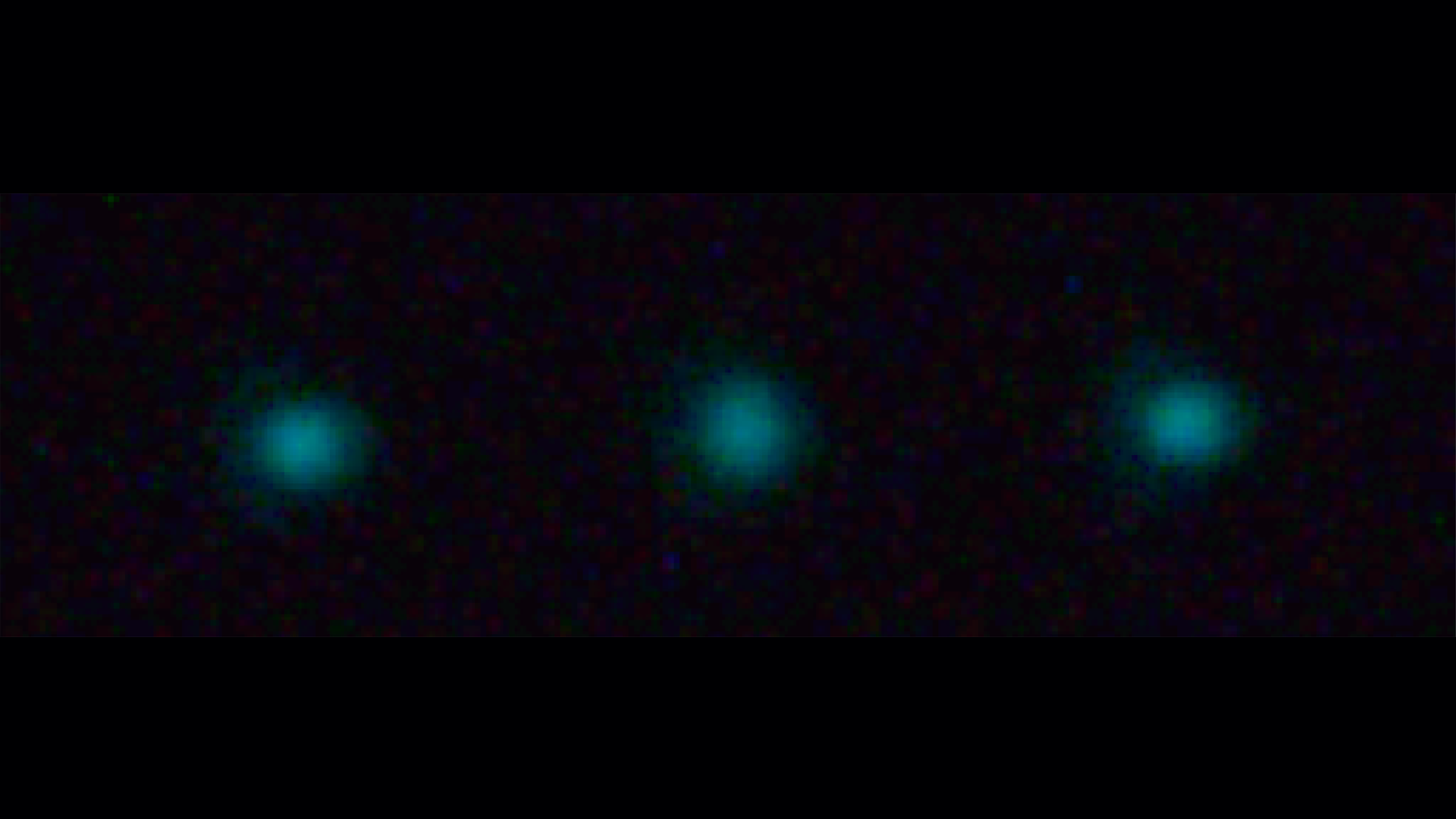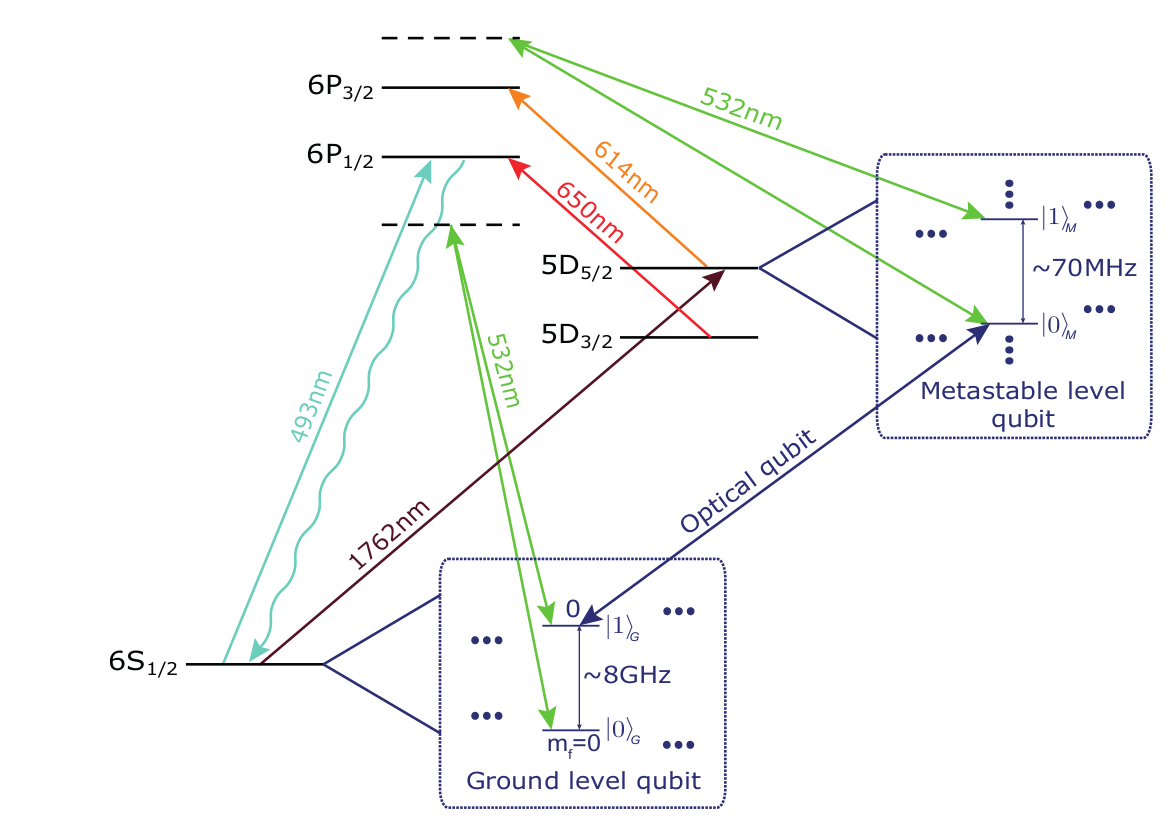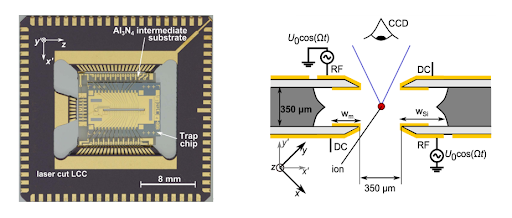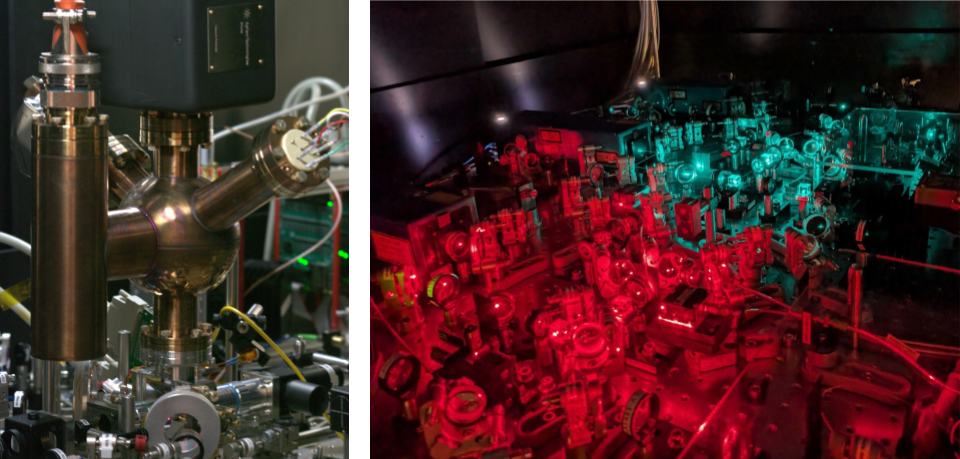ABaQuS
The main focus of the ABaQuS project is developing tools and techniques to realise high-precision quantum control of long chains of 137Ba+ ions. The most natural way to scale up a trapped ion quantum system is by simply adding more ions to the same (linear) chain. The challenge is then to maintain the operation fidelity at a level that allows one to do non-trivial computations. This is a complex task for the following reasons. First, the micrometre-scale ion-ion separation makes individual qubit addressing very difficult. In addition, the reduced spectral gap between neighbouring motional modes makes it increasingly challenging to implement high-fidelity entangling gates. Through the right choice of physical system and ion trap device, and by utilising state-of-the-art laser technology and advanced classical control techniques, we aim at building a high-performance quantum device.

Barium ions illuminated via fluorescence
137Ba+ has an energy level structure that is favourable for trapped ion quantum computing in several ways. Its nuclear spin is 3/2 and therefore it has hyperfine structure that offers a range of potential ‘clock’ qubits with very long coherence times. In particular, there is a clock qubit in the ground S1/2 state (our main qubit), and a clock qubit in the metastable D5/2 state that are connected via a pair of clock transitions. In addition to long coherence times, the metastable state itself is long-lived (~30s), so it can retain its information for timescales far longer than an algorithm's runtime. Together, these properties provide many options for qubit encodings (ground, optical, or metastable) that we can coherently map an ion between as needed, greatly expanding our flexibility in designing protocols. On the practical side, almost all electronic transitions used to manipulate the ions are in the visible part of the spectrum, hence we can use commercial state-of-the-art laser and fibre components. The combination of unique aspects of the 137Ba+ level structure opens up an interesting playground for implementing many novel qubit control techniques, including partial projective measurements, mid-circuit measurements and qubit hiding schemes.

The ions are confined in a monolithic microfabricated 3D trap that is designed and manufactured by the National Physical Laboratory in the UK. The 3D architecture allows us to create a very deep trapping potential such that the ions are very well isolated from the environment. The segmented structure of the trap provides a high degree of control of the trapping potential. This is crucial for being able to reconfigure the ion crystal, split up the ion chain and shuttle ions between different experiment zones in the trap.

As of March 2025, we have demonstrated all of the fundamental qubit operations in a manner that takes advantage of the special properties of 137Ba+. Namely, we can create long-lived qubits in the ground, optical, or metastable manifolds, and we can coherently map a given ion from one qubit manifold to another. Furthermore, we can drive two-qubit Mølmer-Sørensen gates between two ground qubits, two metastable qubits, or one of each. In the process of implementing these operations, we have developed a protocol that yields the lowest State Preparation and Measurement (SPAM) errors on a trapped-ion system, and demonstrated a low-crosstalk optical addressing system using photonic waveguides.

Research directions
- Pushing the limits of laser and optics technology to realise low-noise high-precision individual quantum control of the ions
- Developing theoretical numerical simulation tools to understand qubit interactions in large registers
- Investigating novel qubit control techniques, including, but not limited to, partial projective measurements, mid-circuit measurements, qubit hiding schemes
- Understanding of, and designing, quantum algorithms for intermediate-scale trapped-ion devices
People
Current
- Dr. Chris Ballance (PI)
- Jamie Leppard (Graduate student)
- Andres Vazquez-Brennan (Graduate student)
- Sophie Decoppet (Graduate student)
- William Cutler (Graduate student)
Former
- Dr. Fabian Pokorny (Postdoc)
- Ana Sotirova (Graduate student)
- Lee Peleg (Visiting graduate student)
- Peter Jones (Masters student)
- Ross Jenkinson (Masters student)
If you are interested in working with us, don't hesitate to reach out. We are happy to take on motivated undergraduate or masters students for short-term projects, and we are also happy to consider applications for DPhil and Post-Doc positions. Please use the contact email below for any queries.
